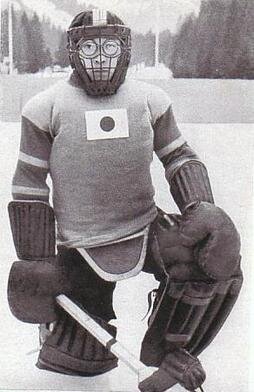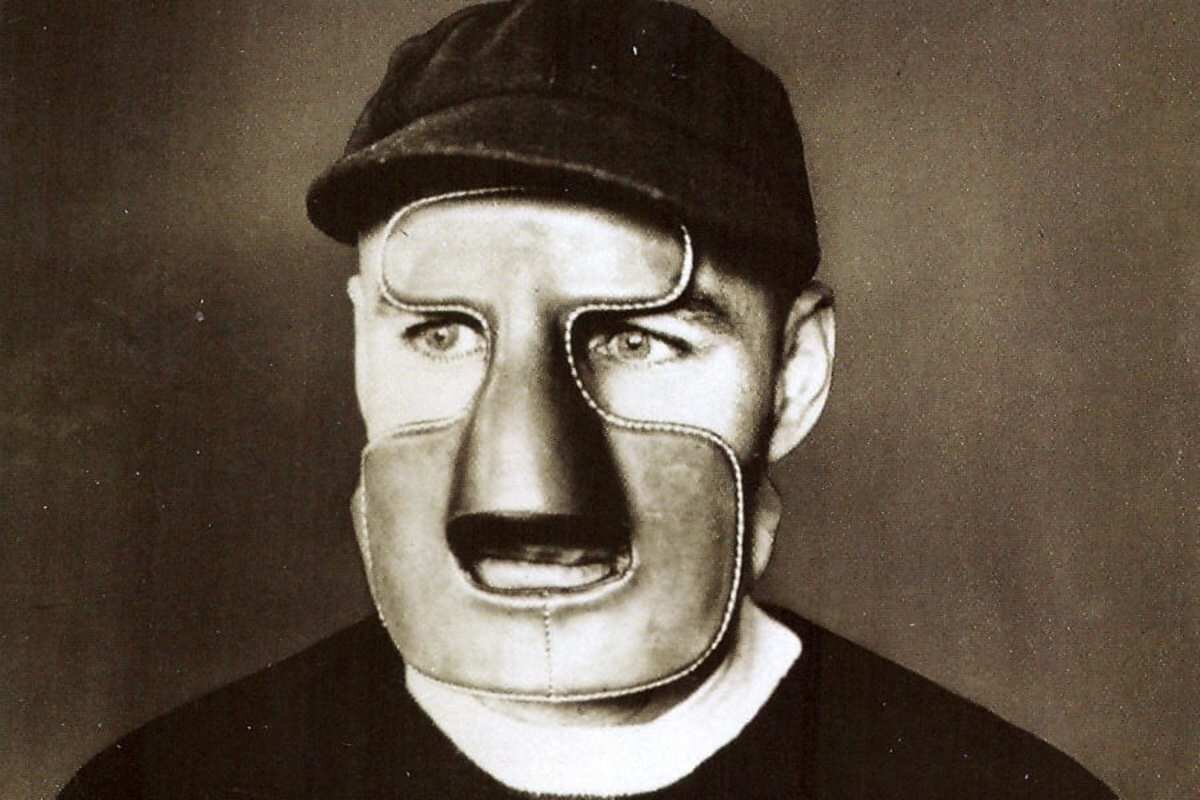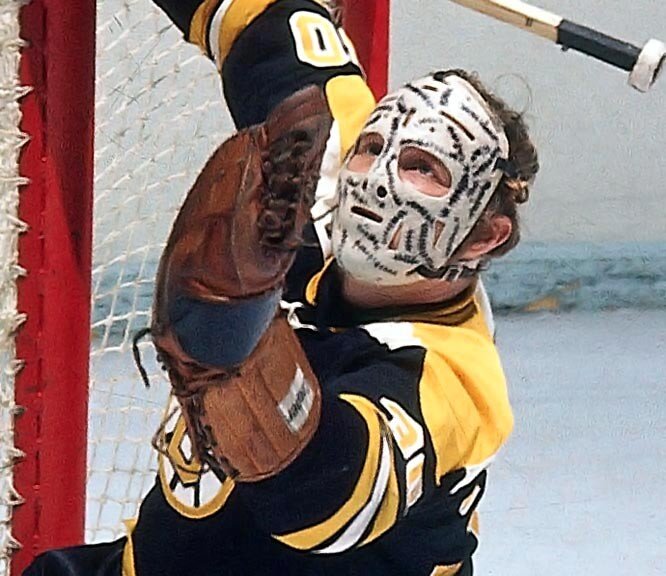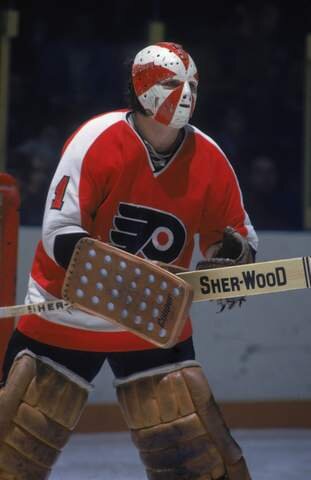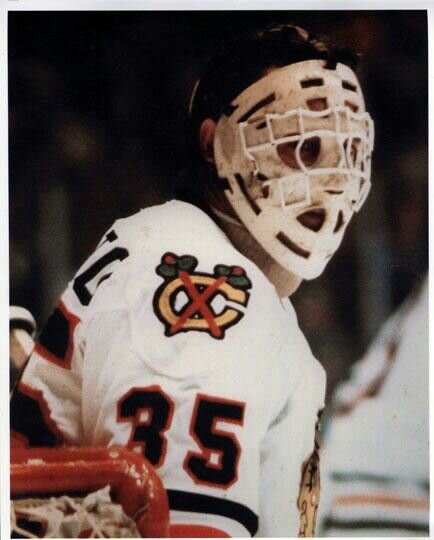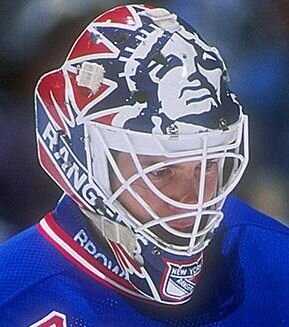The Evolution of the Goalie Mask
Hockey is an extremely unique sport. The combination of hand-eye co-ordination, speed, strength, stamina, fast pace, skill, agility, and violence is unparalleled. One of its more quirky components is the art of goaltending. It is the most individualistic component of the game, and a job that is every mothers worst nightmare for her child. Hockey goalies are a different breed, and more often than not, your goalie is the weirdest dude on your team. It makes sense when you consider they’re using their bodies to stop a frozen rubber puck from entering the cage behind them. Now imagine doing that without any facial protection…
The First Form of Protection
This was the reality until 1927, when a female goalie from Queen’s University decided to throw on a fencing mask to protect her pearly whites. Her name was Elizabeth Graham. There is also some debate about a woman in Switzerland wearing a baseball catcher mask earlier in the 20’s, but this was never confirmed. Of course it took a woman to figure out it was probably important to protect your face. 😂
The First Goalie Mask
Teiji Honma - via Wikipedia
Japanese goalie Teiji Honma dawned a goalie mask that covered his entire face in the1936 Olympics. Still, it wasn’t until 1959 that a goalie mask appeared in an NHL game. This was 42 years into the NHL’s existence. Why are humans so dumb?
Leatherman
The first facial protection in the NHL was not really a mask at all - but rather a “pad” of sorts. Ask most hockey fans, and they’ll tell you Jacques Plante was the first to wear a mask. If they don’t consider this a mask, then sure. The reality is, Clint Benedict beat Jacques Plante to it by 29 years. He broke out this leather pad in 1930 as protection for a shattered cheek bone. Benedict played with the Montreal Maroons at the time - and just like Plante he broke it out at MSG. He stopped wearing it soon after unveiling it after stating that it impaired his vision.
HHOF Images
The Pioneer
via notrehistoire.canadiens.com
The one everyone seems to remember as the first goalie to wear a mask is Jacques Plante. While the paragraphs above prove that isn’t true, Plante was still the pioneer of goalie masks. Jacques was struck in the face in a game at Madison Square Gardens while playing with the Habs. The blow broke his nose and left a cut that required 7 stitches. It took this injury for him to put his foot down and refuse to go on the ice if he couldn’t have some sort of protection. Plante forced coach Toe Blake to allow him to debut his fiberglass mask that he had previously only used in practices. He came back on the ice, received a warm applause from the opposing fans, and then turned aside 27 of 28 shots to pick up a 3-1 for his team. He would never go unmasked again. Plante went on to go 9-0-1 in his first 10 games with the mask. This is the reason Plante is remembered as the pioneer. Prior to him, there was no longevity of mask usage in the NHL. His fiberglass creation was also widely adopted as the go-to goalie mask style for the next 20 or so years.
The Start Of The Art
In 1968, Gerry Cheevers of the Boston Bruins became the originator of goalie mask art. He had his trainer draw stitches on his mask every time he was struck by a stick or a puck.
Gerry Cheevers - AthleteSpeakers.com
Doug Favell - goaliemaskcollector.com
A couple years later, Doug Favell was an early adopter of using colour on his mask. He painted this orange burst pattern to match his Philadelphia Flyers sweater.
Many others would follow suit soon after. Ken Dryden’s Montreal Canadiens mask comes to mind.
The Animal
Another that immediately comes to mind is Giles Gratton’s Jungle Cat Mask. This beauty was created in 1976 by artist Greg Harrison. This mask really got the ball rolling in terms of custom masks. The lion (some people often think of it as a tiger or cheetah), represented Gratton astrological sign, which was a Leo. This was the first time we’d seen a mask personalized to the man behind it, rather than just matching team colours.
Giles Gratton - MSG Networks
The Bird Cage
Vladislav Tretiak - Vintage Sports Images
Stepping back a few years to the early 1970’s: Russian GOAT Vladislav Tretiak of the Moscow Central Red Army became one of the first goalies to wear the helmet/ metal cage combo. It took a while for it to catch in North America, but its popularity spread quickly throughout Europe.
It did eventually catch stateside though, and many goalie in somewhat recent memory actually wore this style cage, even while the modern mask was available. Looking at you Hasek, Cloutier, and Osgoode.
A Step in the Wrong Direction
Despite more protective options like the birdcage being made widely available, some people were stuck in their ways. One of those guys was the late, great, Tony Esposito. Tony had long worn the Plante style fiberglass mask, but it 1976 he broke out a hacksaw and added a wire cage to it.
In his retirement, Tony was asked why he stuck with this outdated model when better options were available. He claimed that the new masks had blind spots. I suppose after you take enough shots to the fiberglass mask you become immune to it.
Mike Liut with the Hartford Whalers - Fox Sports
In the mid to late 80’s the mask we know today really started to take shape. The photo above shows Mike Liut’s mask he wore with the Hartford Whalers. As you can see, the general shape of the mask is much closer to the modern mask, and features a larger facial opening covered with a cage. It’s still extremely tight to his face, and while protection is better than past masks, your brain would still feel it. Here’s a video of him getting hit in the head while wearing this mask:
The Modern Mask
Mike Richter
Finally, we arrive at the “modern” mask. Masks very similar in appearance to the ones you see today started to appear in the late 80’s and early 90’s. Goalies have also continued to get more and more experimental and individualistic with the designs as well. Mike Richter’s mask (pictured left) began popularizing art based on the teams region.
Today’s masks have improved from the early “modern” masks in terms of protection, weight, durability, and vision and will likely continue to do so. There have been some amazing masks over the years, and we’ll share some of our favourites in our upcoming blog. To make sure you don’t miss out, join our newsletter to get notified about all of our latest offerings! You can also follow us on Instagram for tons of sports content.
This blog was written by Jacob Coates

